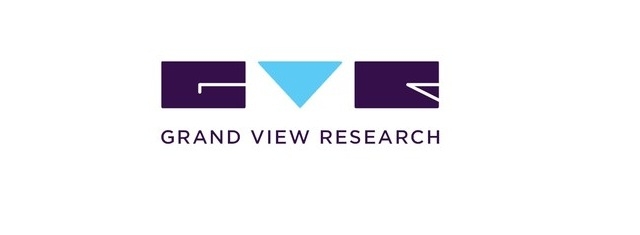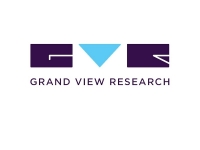Health
AROMATHERAPY CARRIER OILS MARKET Size Worth $1.9 Billion By 2026
NEW REPORT BY GRAND VIEW RESEARCH, Inc

(Source: Grand View Research, Inc.)
USPA NEWS -
The global aromatherapy carrier oil market is expected to account for USD 1.90 billion by 2026, according to a new report by Grand View Research, Inc., exhibiting a CAGR of 10%. Growing awareness and increasing use of therapeutic carrier oils has led to high market growth. Aromatherapy is considered an alternative to medicinal therapy for treatment of a wide range of conditions. Thus, with growing awareness about the field of alternative & complementary medicine, therapeutic-grade carrier oils are increasingly being adopted due to their healing properties.
The global aromatherapy carrier oil market is expected to account for USD 1.90 billion by 2026, according to a new report by Grand View Research, Inc., exhibiting a CAGR of 10%. Growing awareness and increasing use of therapeutic carrier oils has led to high market growth. Aromatherapy is considered an alternative to medicinal therapy for treatment of a wide range of conditions. Thus, with growing awareness about the field of alternative & complementary medicine, therapeutic-grade carrier oils are increasingly being adopted due to their healing properties.
- Key suggestions from the report:
* Cosmetics segment dominated the aromatherapy carrier oils market in 2018 and is anticipated to grow at a lucrative rate during the forecast period owing to increase in incidence of skin and hair problems
* Medical segment also held significant share in 2018 owing to growing awareness about the various types of therapeutic-grade products available
* Rapid industrialization and increasing consumer awareness regarding new medical practices have led to an increase in demand for these products globally
* In 2018, personal care segment was expected to witness lucrative CAGR over the forecast period owing to increase in use of carrier oils as a base for manufacturing soaps
* North America held the largest market share in 2018 owing to rise in the number of key players introducing therapeutic grade products in the U.S.
* Cosmetics segment dominated the aromatherapy carrier oils market in 2018 and is anticipated to grow at a lucrative rate during the forecast period owing to increase in incidence of skin and hair problems
* Medical segment also held significant share in 2018 owing to growing awareness about the various types of therapeutic-grade products available
* Rapid industrialization and increasing consumer awareness regarding new medical practices have led to an increase in demand for these products globally
* In 2018, personal care segment was expected to witness lucrative CAGR over the forecast period owing to increase in use of carrier oils as a base for manufacturing soaps
* North America held the largest market share in 2018 owing to rise in the number of key players introducing therapeutic grade products in the U.S.
* Lucrative trading opportunities have led to an increase in growth potential of the European market
* Asia Pacific is projected to exhibit significant growth rate over the forecast period due to growing awareness pertaining to aromatherapy as well as rise in incidence of skin disorders in this region
* Some of the key companies are Edens Garden, Rocky Mountain Oils, Plant Therapy Essential Oils, Falcon Essential Oils, FLORIHANA, and Moksha Lifestyle Products.
In addition, adoption of natural products has increased as a number of adverse effects are associated with pharmaceutical products. For instance, apricot kernel oil is widely used for skin & hair care and scar & pain management as well as in manufacturing of soaps.
Aromatherapy products such as carrier oils have also been proven to be highly effective in pain management and healing of wounds & cuts. These products consist of healing as well as antibacterial properties.
* Asia Pacific is projected to exhibit significant growth rate over the forecast period due to growing awareness pertaining to aromatherapy as well as rise in incidence of skin disorders in this region
* Some of the key companies are Edens Garden, Rocky Mountain Oils, Plant Therapy Essential Oils, Falcon Essential Oils, FLORIHANA, and Moksha Lifestyle Products.
In addition, adoption of natural products has increased as a number of adverse effects are associated with pharmaceutical products. For instance, apricot kernel oil is widely used for skin & hair care and scar & pain management as well as in manufacturing of soaps.
Aromatherapy products such as carrier oils have also been proven to be highly effective in pain management and healing of wounds & cuts. These products consist of healing as well as antibacterial properties.
Grand View Research has segmented the aromatherapy carrier oils market on the basis of application and region:
- Aromatherapy Carrier Oils Application Outlook (Revenue, USD Million, 2015 - 2026): Cosmetic (Skin Care, Others)
* Personal Care : Household, Soap
* Food & Beverages: Medical, Pain Management, Cold & Cough, Others
- Aromatherapy Carrier Oils Regional Outlook (Revenue, USD Million, 2015 - 2026)
* North America: U.S., Canada
* Europe: Germany, UK, France, Italy, Spain, Russia
* Asia Pacific: Japan, China, India, Malaysia, South Korea, Singapore
*Latin America: Brazil, Mexico, Argentina
* Middle East & Africa: South Africa, Saudi Arabia, UAE
Source : Grand View Research, Inc.
Ruby BIRD
http://www.portfolio.uspa24.com/
Yasmina BEDDOU
http://www.yasmina-beddou.uspa24.com/
- Aromatherapy Carrier Oils Application Outlook (Revenue, USD Million, 2015 - 2026): Cosmetic (Skin Care, Others)
* Personal Care : Household, Soap
* Food & Beverages: Medical, Pain Management, Cold & Cough, Others
- Aromatherapy Carrier Oils Regional Outlook (Revenue, USD Million, 2015 - 2026)
* North America: U.S., Canada
* Europe: Germany, UK, France, Italy, Spain, Russia
* Asia Pacific: Japan, China, India, Malaysia, South Korea, Singapore
*Latin America: Brazil, Mexico, Argentina
* Middle East & Africa: South Africa, Saudi Arabia, UAE
Source : Grand View Research, Inc.
Ruby BIRD
http://www.portfolio.uspa24.com/
Yasmina BEDDOU
http://www.yasmina-beddou.uspa24.com/
Ruby Bird Yasmina Beddou Aromatherapy Carrier Oils Market New Report By Grand View Research Cosmetics Segment Medical Rapid Industrialization Consumer Awareness New Medical Practices
Liability for this article lies with the author, who also holds the copyright. Editorial content from USPA may be quoted on other websites as long as the quote comprises no more than 5% of the entire text, is marked as such and the source is named (via hyperlink).






